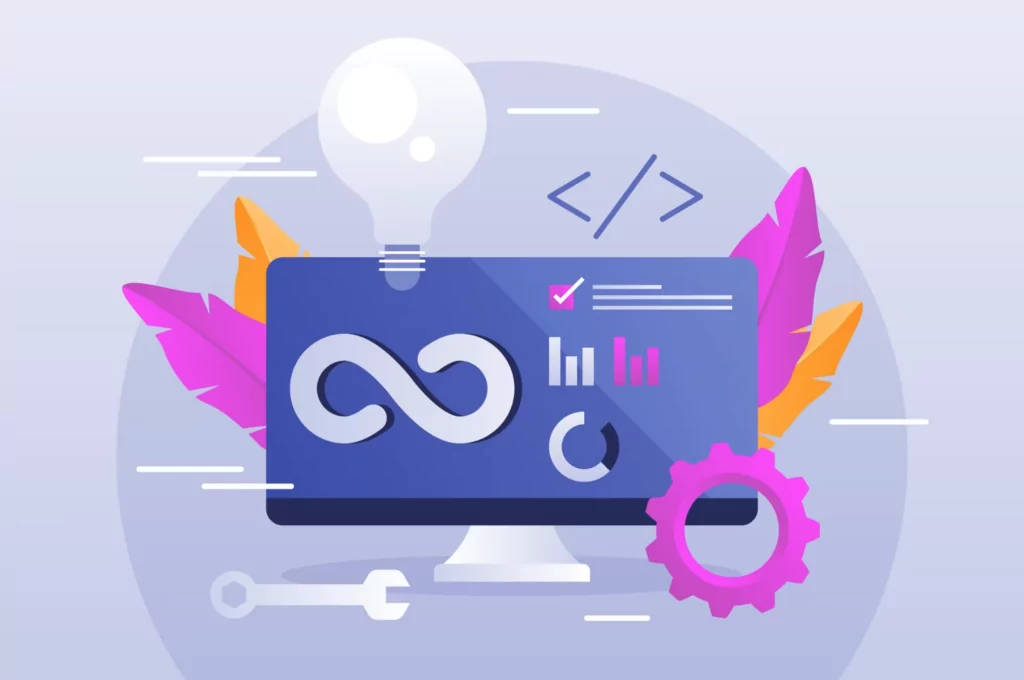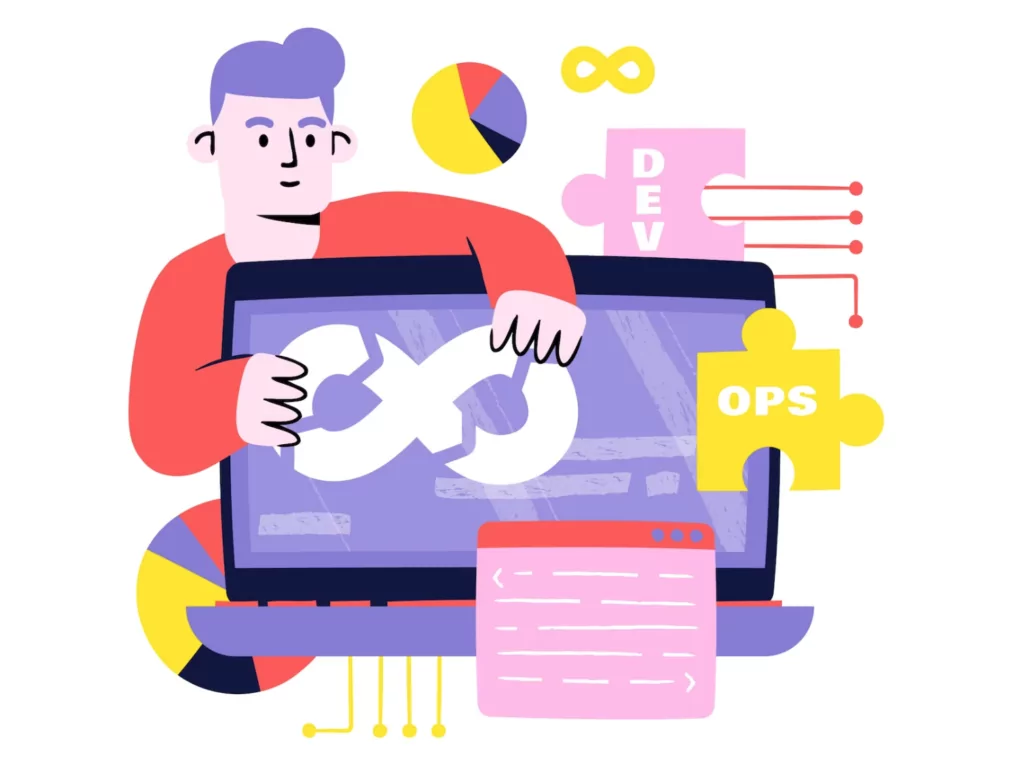Object-Oriented Programming, also known as OOP, is an archetype of programming that utilizes objects and their interactions to design and write programs. It is one of the most popular programming paradigms ever and has been used widely in recent years.
OOP is based on the conceptualization of objects, which are data structures that contain both data and code. Objects can be created from a class, a template for an object. Objects can interact with each other by sending messages. This allows for code reuse and modularity.
OOP languages typically provide features such as inheritance and polymorphism, allowing a more flexible code design. OOP programs are often easier to understand and maintain than traditional procedural programs.
If you’re looking for the best programming courses to get into the programming world, OOP may seem daunting to learn. However, once you understand the basics of objects and classes by enrolling in the best programming courses, OOP can be a powerful tool for writing robust and maintainable code. These best programming courses can help candidates learn essential skills and write effective, maintainable and robust codes.

The Fundamental Building Blocks of OOP
Class
A class is a blueprint for objects. Classes are reusable and can be used to create many objects with similar properties and behaviors. This makes classes the building blocks of object-oriented programming (OOP).
A class defines the data and behavior of objects by specifying their attributes, methods, and events. Objects created from a particular class share these characteristics but may differ in other ways (such as color or size).
Objects
Objects are the building blocks of object-oriented programming. They’re data structures with an identity, which means they have attributes (data) and behavior (code).
Objects have types, defining what kind of operations other objects can perform. Many kinds of objects exist, including numbers, strings, images and files.
Methods
Methods are functions that can be called on an object. They can be defined in a class and have arguments, return values and scope. Methods are also commonly referred to as methods of the class or simply “methods”.
In general, there are three types of methods: public methods (which can be accessed by any other part of your program), private methods (which cannot be accessed by external code), and protected methods (which may only be called by other objects descended from the same class).
Static methods do not belong to any particular class instance; instead, they operate on that class itself rather than individual instances.
Attributes
Attributes are data members of a class, and they can be either primitive or reference types. Attributes are used to store the state of an object. In OOP, you should always initialize your attributes when creating objects.
The Principles of Object-Oriented Programming
The principles of object-oriented programming are encapsulation, inheritance, abstraction, and polymorphism. These principles guide you in developing programs that can be easily maintained and extended. Let us understand these principles in detail:
Encapsulation
Encapsulation is the process of wrapping data and functions together in a single unit, which becomes an object. This process allows us to hide the implementation details of a class from the user.
Encapsulation makes code easier to understand and maintain by separating functionality into distinct units or classes. It also allows us to change the implementation details without affecting the users of your class (as long as you don’t change their public interfaces).
Abstraction
Abstraction is the process of hiding implementation details from users. This can be done by providing an interface to the user, which allows them to interact with objects without knowing about their internal workings.
Abstraction reduces complexity by simplifying interfaces and limiting interactions between objects. It also allows you to change how an object works without affecting other parts of your codebase that use it. Those parts depend only on its public interface rather than its actual implementation details.
Inheritance
Inheritance is the process of creating a new class by extending another class. This allows you to create a general class that can be extended to create more specific classes.
The concept of inheritance is important in object-oriented programming because it allows you to reuse code, avoid writing similar code multiple times, and add functionality without modifying existing classes.
Inheritance is a very powerful concept and can be used in many ways. However, you should use inheritance sparingly. Otherwise, you’ll end up with a “code bloat” problem.
Polymorphism
Polymorphism is a principle of object-oriented programming that allows a single name to be used for different data types.
For example, if you have an array of values that you want to sort, you might have several different sorting methods: one for strings, another one for integers and so on. In this case, polymorphism would allow you to call any of those sorting methods without knowing what type of value they’re meant for at compile time or even runtime.
What are the Benefits of Object-Oriented Programming?
Object-oriented programming is a powerful paradigm for designing software. Writing clear, reusable, modular, and maintainable code makes OOP easier. Listed below are the essential benefits of object-oriented programming:
Modularity
Modularity is a cornerstone of object-oriented programming, making it easier to understand and maintain code. It means the code is broken up into small chunks that are easy to digest, each with its own purpose and responsibility.
Reusability
Reusability is using an existing solution to solve a new problem. In object-oriented programming, reusability makes code more maintainable and easier to read. This can be achieved through inheritance, where you inherit or copy properties from one class into another class.
Pluggability
You can plug in new features, components, and technologies. This benefit of object-oriented programming allows you to create reusable code that can be used in different contexts.
However, this also means that your code becomes more complex over time as more features are added on top of each other. If you don’t organize your classes properly or use the right patterns, your software will become harder to maintain and change over time due to its complexity.
The best way to avoid this is by applying design patterns that help you organize your code most sensibly.
Simplicity
Object-oriented programming is a great way to organize your code. It can also make it easier for you and others on your team to understand what’s happening in the program.
Since objects are reusable, they’re easier to maintain than big blocks of procedural code that do everything simultaneously.

Career as an Object-Oriented Programmer
The demand for skilled programmers continues to soar as the world becomes increasingly digital. Object-oriented programming (OOP) is one of the most popular and powerful programming paradigms used today, and it’s an excellent choice for anyone considering a career in programming.
One of the biggest advantages of a career as an object-oriented programmer is the high demand for skilled professionals. Every industry needs programmers to design and develop robust and scalable software applications. As an object-oriented programmer, you can work in various industries, including finance, healthcare, education, and technology.
Another advantage of a career as an object-oriented programmer is the potential for high salaries and excellent job security.
However, you’ll need a strong foundation in programming concepts and a deep understanding of object-oriented design principles to succeed as an object-oriented programmer. You’ll also need to stay up-to-date with the latest programming languages and tools, such as Java, C , and Python. A degree in computer science, software engineering, or a related field is also highly recommended.
Examples of Object-Oriented Programming languages
Following are some of the top examples of object-oriented programming languages:
- Java: Java is one of the most popular OOP languages for developing enterprise, mobile, and web applications. It supports features such as encapsulation, inheritance, and polymorphism.
- Python: Python is a high-level programming language that supports OOP and is widely used for developing web applications, data analysis, and machine learning. It supports features such as classes, inheritance, polymorphism, and objects.
- C: C is another popular OOP language used to develop systems software, embedded systems, and gaming applications. It supports features such as classes, inheritance, objects, and polymorphism.
- PHP: PHP is a popular server-side scripting language that supports OOP and is widely used for developing web applications. It supports features such as classes, objects, inheritance, and polymorphism.
Other popular OOP languages include C#, Ruby, Objective-C, Swift, and Kotlin. Each of these languages has its own strengths and weaknesses, and developers choose them based on the specific needs of their projects.
Frequently Asked Questions
1. What are the best Object-Oriented Programming Languages?
The best object-oriented programming languages are Python, Ruby, and Java. Python is popular for its flexibility and simplicity, and Ruby is known for being easy to learn and powerful simultaneously. At the same time, Java is ideal for large projects because it has an extensive library of resources available.
2. What are the different types of OOP functions?
There are two types of OOP functions: static and non-static. Static functions can be called without having an instance of the class, so they don’t need to be instantiated. Non-static functions require that you have an instance of the class available before calling them.
3. How long does it take to learn Object-Oriented Programming?
If you have no experience with object-oriented programming, it may take you several months of studying every day before your knowledge and skills are good enough to start developing projects with object-oriented concepts. If you already have some experience with object-oriented programming, it may only take a few weeks or months to become proficient in this skill.
Conclusion
Object-oriented programming is a powerful tool that can help developers create more efficient and reliable applications. By leveraging the power of OOP, developers can write code with better maintainability and extensibility and improve their development speed. With its numerous benefits, it’s no wonder many organizations are starting to embrace this approach to programming.

